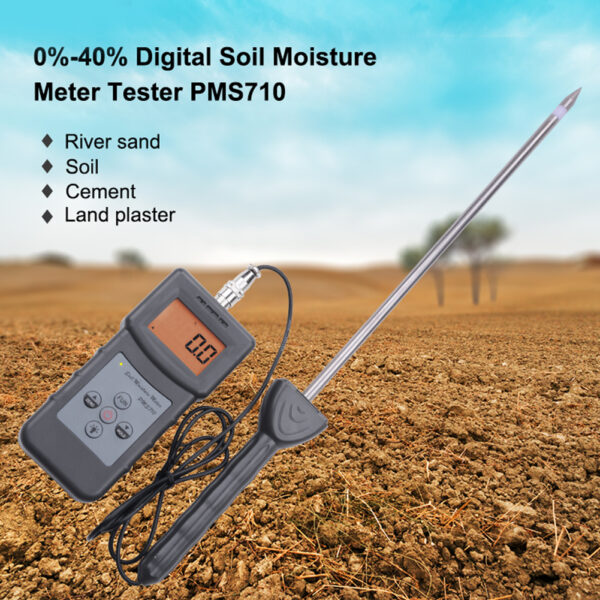Look Into the Globe of Moisture Meters: Whatever You Need to Know
In the world of wetness meters lies a world of accuracy and usefulness that often goes undetected. Understanding just how moisture meters operate, the different kinds available, and their diverse usages can shed light on their value in ensuring high quality and efficiency.
Exactly How Moisture Meters Work
Moisture meters run by measuring the electric conductivity or capacitance of products to determine the wetness web content present. These meters are vital tools across different sectors, including agriculture, building and construction, and woodworking. By utilizing different techniques such as pinless or pin-type modern technology, wetness meters supply exact analyses that aid professionals make informed decisions.
Pin-type wetness meters work by placing the sharp pins right into the product being checked. The electric conductivity in between the pins is after that gauged, with greater moisture levels leading to increased conductivity. Moisture Meter. On the other hand, pinless moisture meters use electromagnetic signals to scan a larger area without causing any damage to the material's surface. These meters are perfect for rapidly examining wetness degrees in big areas or completed products.
No matter the technique utilized, wetness meters play a critical duty in protecting against concerns such as mold and mildew development, structural damage, or item issues triggered by excess moisture. Understanding just how these meters work is important for ensuring the quality and integrity of products in different applications.
Types of Moisture Meters
Given the essential role moisture meters play in various industries, it is important to comprehend the various types readily available to specialists for accurately analyzing dampness levels - Moisture Meter. There are primarily two primary kinds of moisture meters: pinless and pin-type moisture meters

On the various other hand, pinless dampness meters use electromagnetic sensor plates to scan a bigger area of the material without causing any kind of damage. This kind appropriates for rapidly scanning huge areas and is generally used for floor covering, walls, and ceilings. Pinless meters are practical for taking analyses on finished surface areas without leaving any type of visible marks.
Both sorts of moisture meters have their advantages and are picked based on the particular needs of the job available. Understanding the differences between these kinds is essential for specialists to make exact moisture evaluations.
Applications Throughout Industries
Building and construction professionals count on moisture meters to assess the dampness levels in structure materials like concrete, timber, and drywall, which is critical for preserving architectural integrity and protecting against issues like rot or mold and mildew. The floor covering market makes use of moisture meters to measure the wetness content in subfloors before mounting numerous flooring coverings, stopping costly damages due to excess dampness. In the food market, moisture meters are utilized to check and control moisture levels in items such as grains, nuts, and dried out fruits to maintain freshness and high quality.
Tips for Making Use Of Moisture Meters
Make use of the moisture meter's calibration settings to make certain accurate readings when determining the wetness web content in numerous materials. Calibration is important for the correct performance of a dampness meter. Prior to each use, it is suggested to examine and readjust the calibration setups according to the specific material being tested. Additionally, ensure the meter is set to the appropriate moisture range for the product you are measuring to obtain the most precise outcomes.
When utilizing a pin-type wetness meter, insert the pins to the appropriate deepness advised for the material being evaluated. This ensures that the dampness analyses are drawn from the proper deepness within the material, offering a more exact representation of its moisture web content. For pinless dampness meters, keep in mind to maintain correct contact with the product's surface to obtain trusted analyses.
Consistently inspect and replace the batteries in your wetness meter to prevent imprecise readings because of low power. When not in use to lengthen its life expectancy and keep its accuracy, Shop the meter in a safe and dry location. By adhering to these tips, you can maximize the performance of your dampness meter and acquire specific moisture material dimensions throughout different materials.
Upkeep and Calibration
To ensure the accuracy of wetness web content dimensions, regular maintenance and calibration of the moisture meter are important action in its appropriate Recommended Site functioning. Upkeep involves keeping the moisture meter tidy and complimentary from debris that could influence its readings. It is essential to follow the maker's guidelines for cleaning to avoid damages to the device. In addition, normal calibration is needed to verify the accuracy of the readings. Calibration changes the moisture meter to make certain that it gives regular and trusted outcomes.
Calibration ought to be executed regularly, especially if the dampness meter is used regularly or in vital applications where precise dimensions are required. By calibrating the dampness and maintaining meter consistently, individuals can rely on the accuracy of the dampness content dimensions gotten.
Conclusion

To conclude, wetness meters play a crucial function in different sectors by accurately measuring the wetness web content of products. Understanding how these gadgets function, the various types available, and appropriate upkeep and calibration are crucial for obtaining reputable outcomes. Whether in production, farming, or building and construction, using moisture meters helps guarantee high quality control and effectiveness in procedures.

In conclusion, moisture meters play a crucial duty in numerous markets by precisely measuring the dampness material of Recommended Reading materials.